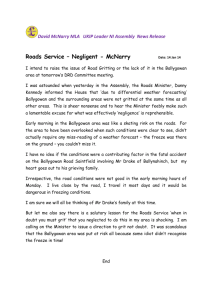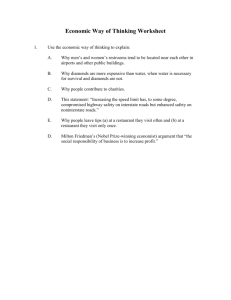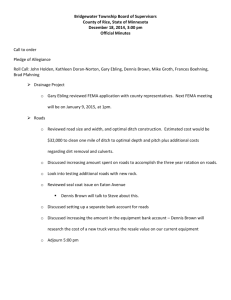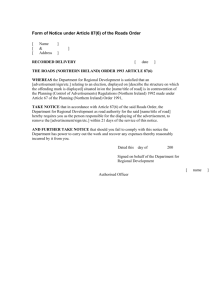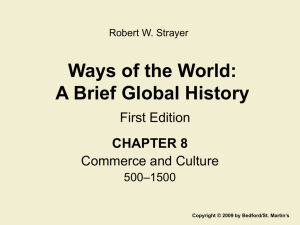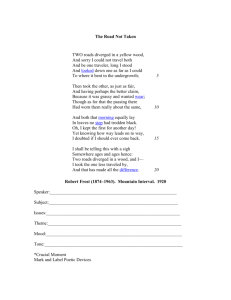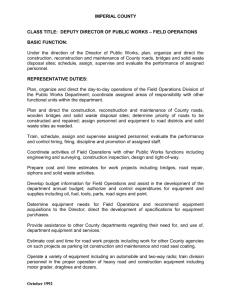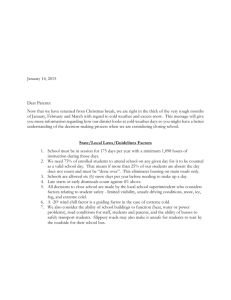"Communal Road Construction and Reconstruction" program
advertisement
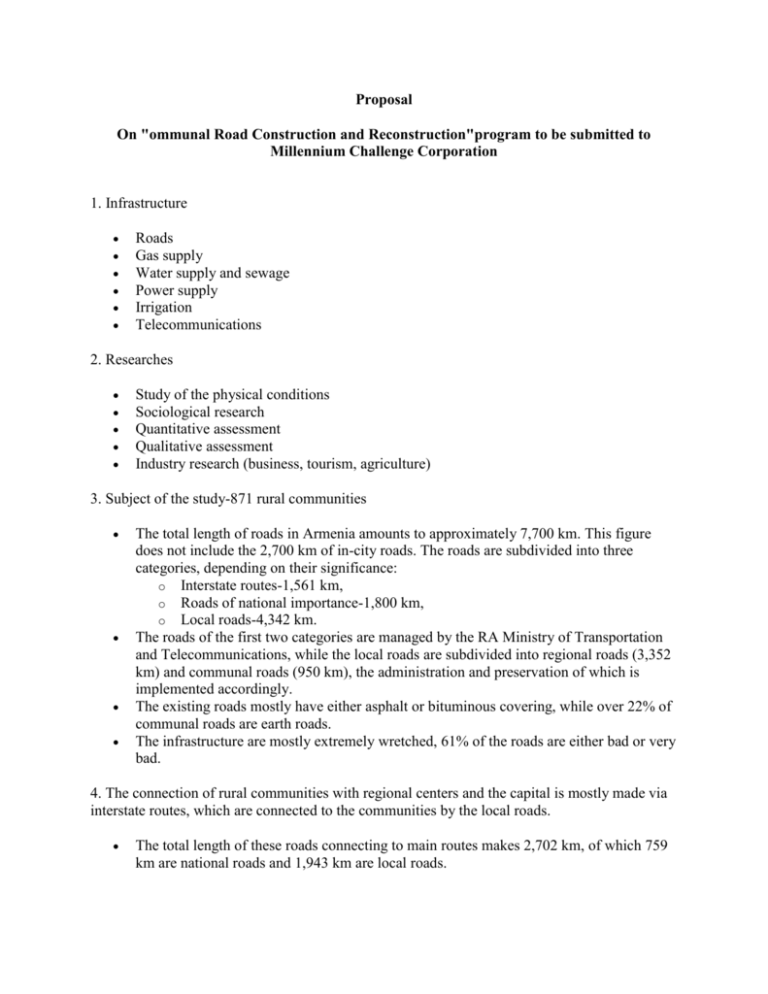
Proposal On "ommunal Road Construction and Reconstruction"program to be submitted to Millennium Challenge Corporation 1. Infrastructure Roads Gas supply Water supply and sewage Power supply Irrigation Telecommunications 2. Researches Study of the physical conditions Sociological research Quantitative assessment Qualitative assessment Industry research (business, tourism, agriculture) 3. Subject of the study-871 rural communities The total length of roads in Armenia amounts to approximately 7,700 km. This figure does not include the 2,700 km of in-city roads. The roads are subdivided into three categories, depending on their significance: o Interstate routes-1,561 km, o Roads of national importance-1,800 km, o Local roads-4,342 km. The roads of the first two categories are managed by the RA Ministry of Transportation and Telecommunications, while the local roads are subdivided into regional roads (3,352 km) and communal roads (950 km), the administration and preservation of which is implemented accordingly. The existing roads mostly have either asphalt or bituminous covering, while over 22% of communal roads are earth roads. The infrastructure are mostly extremely wretched, 61% of the roads are either bad or very bad. 4. The connection of rural communities with regional centers and the capital is mostly made via interstate routes, which are connected to the communities by the local roads. The total length of these roads connecting to main routes makes 2,702 km, of which 759 km are national roads and 1,943 km are local roads. 5. During the pas several years quite significant capital investment has been made into road construction in Armenia. This investment was mostly directed to main route roads. 6. The findings of the research show that the 2,205 km or 61% of rural roads connecting to main routs are classified as very bad, 1033 km or 28% as satisfactory, and only 406 km, or 11%, are in a good condition. Good-over 60 km/hour Satisfactory-60-40 km/hour Bad-20-40 km/hour Very bad-less than 20km/hour. 7. A significant part of the roads becomes either impassable or little passable in winter time. 8. The findings of a research administered in December 2002 show that in some parts of the country the expenses for road maintenance have doubled or tripled, exceeding the 20-30% growth rate in retail prices for goods and services. 9. It is impossible to provide automobile transportation services without an adequate road network, as a result of which over ¼ of rural communities of Armenia do not have a regularly operating railway and in many cases the bus stop is at the distance of 3 km form the community (20 km distance in case of remote communities). 10. During the survey the majority of the population rated the gas supply as being of foremost importance, followed by the irrigation and the roads. 11. The preferences displayed by male and female respondents almost fully coincided, however, certain distinctions have been recorded: Male respondents: roads and irrigation Female respondents: gas, water and telephone 12. Why have the man placed the priority on roads: They are important for the development of agricultural business It becomes easier, faster and more accessible to use the services in the village. 13. The expert interviews in the spheres of business, tourism and agriculture (six experts per industry), administered by Delphi method, have revealed that the experts rate the restoration of road network to be of primary importance, particularly, with regard to road furnishing (tourism). Actions proposed for the reconstruction of road network The reconstruction works have been projected in terms of expenses to be incurred for the restoration of the road covering, which does not include the costs of reconstructing other road elements (the land layer, profile design, artificial structures, security, etc). The reconstruction expenses have been projected for three main types of restoration: The projections are made for a reconstruction with reinforcement of the covering or its change for covering of a higher level; The projections are made for the restoration and preservation of the covering; The projections are made for a reconstruction with a lower level covering. The estimates have been made by different areas and regions, yielding the following investments requirements for the country: For reconstruction of the first type-about 186 mln. USD; For reconstruction of the second type-about 135 mln. USD For reconstruction of the third type-about 90 mln. USD. It is necessary to note that the estimates refer to the roads connecting rural communities to the main routes and do not include the intercommunal roads. The expenses associated with the maintenance of these roads by the three reconstruction types will make: For reconstruction of the first type-about 2.5 mln. USD; For reconstruction of the second type-about 1.9 mln. USD For reconstruction of the third type-about 1.4 mln. USD.
